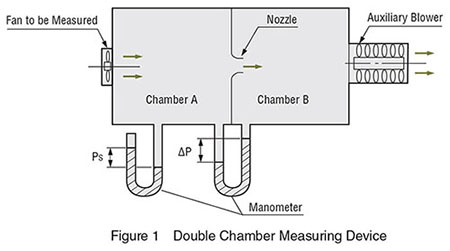Thank you so much for the response! Very helpful!
A few things:
Again you are measuring the DIFFERENCE in level of the water in the larger reservoir bottle and the tall measuring tube.
The video says the sum, not the difference...?
For a simpler unit you can use a J-shaped tube with a larger-diameter reservoir bottle attached to the short arm of the J.
Please link to a video or instructions.
With this unit arranged with vertical tubes you can measure pressure differences of cm easily. But try to use that to measure a difference of 2.00 mm, and be confident that your result is NOT 2.10. (Don't forget, you READ TWO measurements - one from each side - and calculate the difference.
That's an excellent point so, ideally, I should not mark the tube but, instead, have the gradation on the backboard and make sure the tube is perfectly straight. I'm guessing that using hot glue might not work depending on the tube's material, so maybe epoxy? What do you suggest so that the measurements aren't obstructed?
Then you connect the pressure to be measured to the input connector and watch the tall tube level rise.
Ok, so I see that the fan I'm testing would need to be extracting air from the tube. How can I connect a fan (various sizes, although I can't see myself testing smaller than 80mm or larger than 210mm at this time) to a water manometer? Please link to video and/or instructions.
Those numbers can range from 0.5mm water to 4 or 5 mm water for VERY powerful fans.
The EK Furious Meltemi (discontinued) is 7.13, and I have another (forgot which) that is 11. Then there are server fans...
😉
So, as I said, for very low pressures like this one uses a different arrangement in which the "tall measuring tube" part of the system is almost horizontal and long, and the water level in the reservoir with no pressure applied is at the low end of that tube - mark that as the zero point.
That's an excellent clarification of what you wrote in your previous message - I was wondering if you meant almost horizontal, which means I need to make sure that I can store it vertically.
It is very handy if you can adjust water in the reservoir to match that zero point as you start.
What if I put a stopper in the open end when not in use? It seems like filling the reservoir could be achieved by having a stopper in it, too...?
From there you can draw a measuring "ruler" with even markings from 0 to 4 cm (IF your chosen high spot is exactly 4.00 cm above the zero point). If the distance along the sloped tube is actually 20 cm (200 mm, or 7.9 in) between real zero and real 4 mm, your custom scale will have magnified the precision of reading by a factor of 50. So along the custom scale you marked, 1.00 mm will represent 0.02mm of actual water column height difference.
Please link to a visualization of this, preferably a comparative one to help me understand.
NOTE in using such a device that the mounting method for the sloped back support plate for the tube MUST be set truly horizontal. For this is is best to have a small spirit level unit firmly fastened to the support plate and a way to adjust unit tilt slightly. Then ALL your work - including marking the initial Zero and high-pressure points and the resulting custom scale - MUST be done with the unit level.
By "unit level", are you referring to a "level" used to make sure something is perfectly flat?
Thanks again! You rock!



